The Dell Venue 8 7000 Series Review
by Brandon Chester on March 12, 2015 8:00 AM EST- Posted in
- Tablets
- Dell
- Android
- Mobile
- Venue 8 7000
Display
The display is one of the most important aspects of a mobile device. This is even more true for tablets than smartphones, with tablets essentially being giant displays that you hold and interact with. Given that Dell has not had a massive presence in the mobile space in recent years, I had no idea what to expect from the display on the Venue 8. It's an 8.4" 2560x1600 AMOLED display, and with its thin bezels it shares the same Infinity Display branding as Dell's XPS 13. The display on the QHD+ XPS 13 has very good calibration, and so one would hope that this would apply to the Venue 8 as well.
Our first test is the maximum brightness of the device. As you can see, at 100% average picture level it's not looking good, with the Venue 8 having the absolute lowest brightness of any device we've tested in recent years. Indeed, when using the device in any environment with unforgiving lighting it could be difficult to see the display. What's also unfortunate is that the Venue 8 doesn't have any sort of brightness boost when auto brightness is enabled like on the Galaxy Note 4 and Moto X 2014.
One new chart that I'm introducing for AMOLED devices is a graph of the device's brightness at a given average picture level (APL), which is the percentage of the display that is lit compared to a 100% white display. Because AMOLED displays are able to turn pixels off, they are able to drive a higher brightness with a lower APL while staying within their target power usage. As you can see, the brightness of the Venue 8 will go as high as 430 nits when only 10% of the display is lit. Based on our previous testing, it can be said the APL for your average web page or app is somewhere around 80%, and so the brightness of the Venue 8 can be closer to 250 nits in normal use. Even so, 250 nits is quite dim when compared to other phones and tablets we've tested, and it's unfortunate to see all the recent AMOLED devices not made by Samsung hovering around that number.
The greyscale results on the Venue 8 are certainly not the worst of all the devices that we've tested, but with an average DeltaE of nearly five the errors are clearly visible for most shades of grey. When looking at the RGB balance for each shade we see that there's a fairly consistent lack of blue in the luminance which causes a noticable red shift in the device's whites and a resulting white point of 6203K.
In our saturation test, the Venue 8 performs exceptionally poorly, and comes in with the highest DeltaE of any device that we've tested in recent times. There's a large amount of saturation compression, with certain primary colors like green outputting what should be 100% saturated green with an input of only 60% saturation. In fact, some of the shades of red and green are more saturated than any color I have ever seen on a display before. While this could be a good thing on future devices with color management and Rec. 2020 content, at the moment it simply makes content designed for the sRGB gamut look wildly inaccurate.
With the large errors in greyscale and saturations, there's not much hope for accurate reproduction of color mixtures. With the color checker test we see an average error that is once again larger than any other device recently tested. What's even more frustrating is that the largest errors are in mixtures of green and red, which includes skin tones. Obvious errors in skin colors are visible in photos and when watching both animated and live action video on the Venue 8. While it's definitely not unusable, I would recommend pretty much any other device if looking at photos and watching videos is something a user wants to use a tablet for more than occasionally.
It's unfortunate that such a high end device is hampered by a relatively poor display. Every recent AMOLED device that isn't produced by Samsung has suffered from the same lack of calibration and low brightness, and on every single one of them it has a very negative impact on the user experience. In addition, the Venue 8 suffers from the color banding in darker shades of grey and green that exists on some AMOLED displays, and the PenTile subpixel pattern can be visible on the edges of smaller text even at a normal viewing distance. AMOLED displays have many benefits, but if manufacturers are unable to source calibrated panels of the same quality as those in Samsung's phones and tablets then they should seriously consider opting for a good IPS LCD display instead.


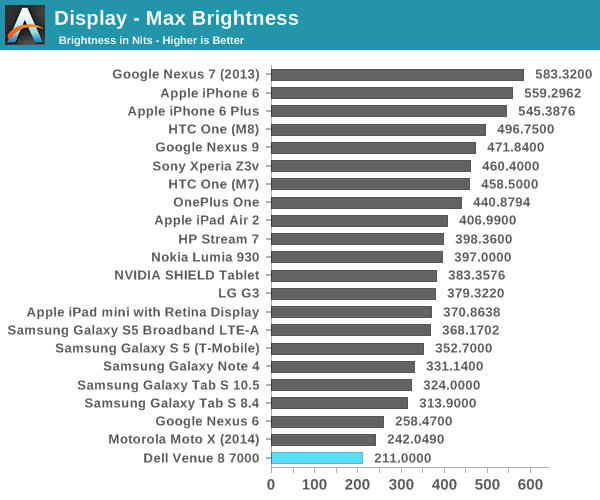
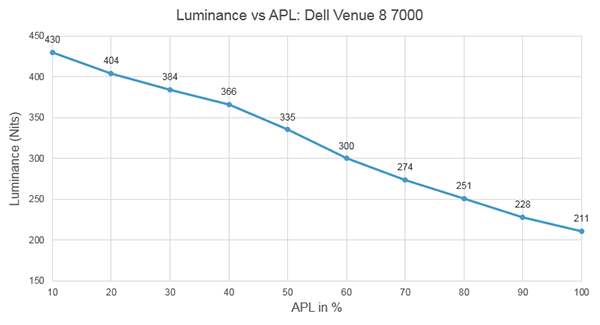
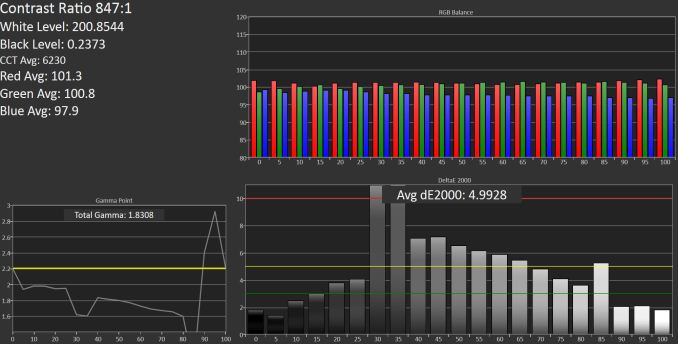
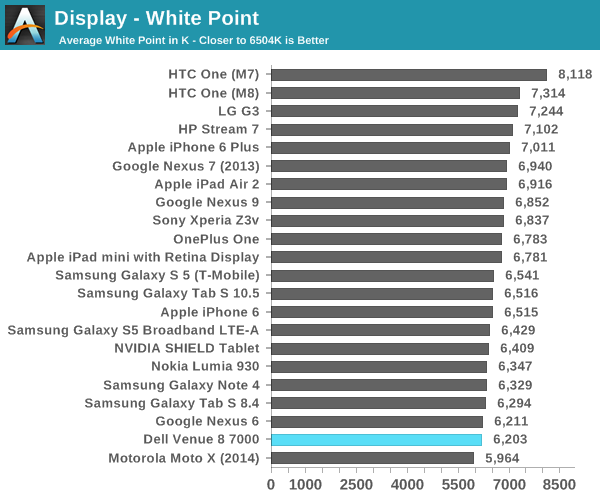

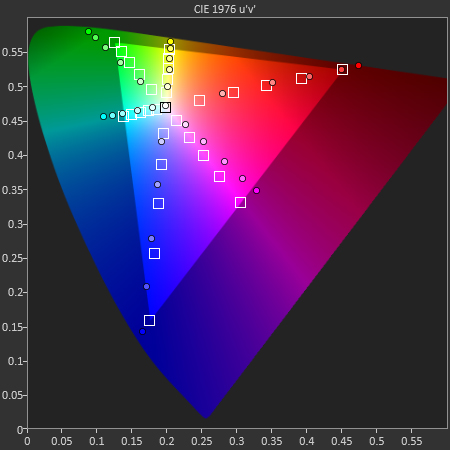
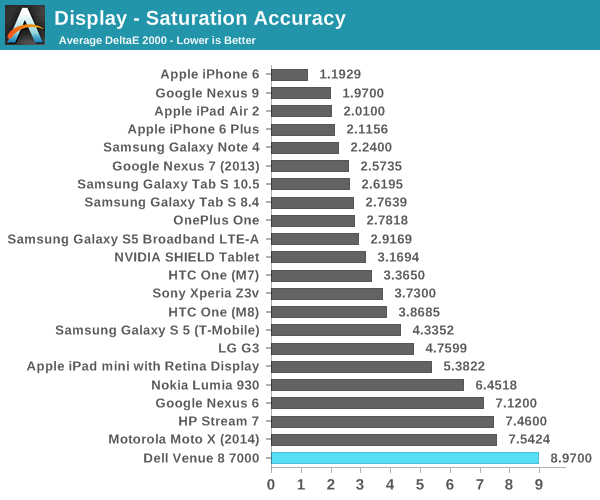

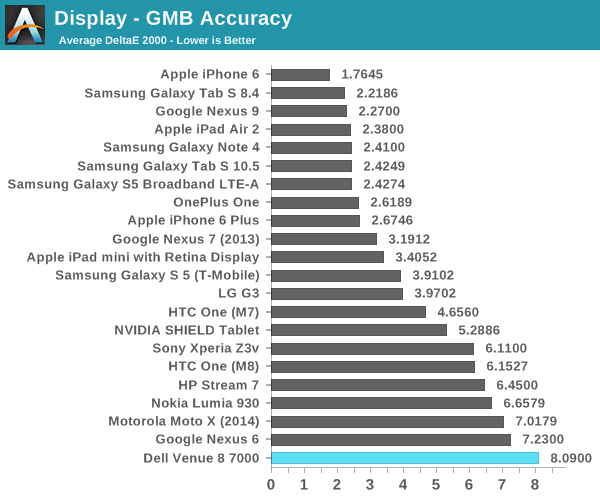








89 Comments
View All Comments
kmmatney - Friday, March 13, 2015 - link
Tablet for home use is ridiculously awesome. That's why they invented couches - they knew there would be tablets to use them on some day.zepi - Thursday, March 12, 2015 - link
Maybe Dell should just release a Windows edition of this tablet?Manch - Thursday, March 12, 2015 - link
I have the Dell venue 8 Pro. I like it better than the Android version. I'm sure this will get the Windows treatment. If only you could dual boot. bluestacks is kind of crappynevertell - Thursday, March 12, 2015 - link
Are there any Windows 8 tablets with PowerVR G6430 ?I'd want this tablet if it had a nice Intel GPU, so I'd have the drivers for it :(
nathanddrews - Thursday, March 12, 2015 - link
This. I would actually consider buying this, maybe even for the asking price, if it was Windows.I'm currently using the Microcenter WinBook TW100. For $160, you don't get the best possible build quality or components, but it's an 800p IPS with MicroSD, micro HDMI, micro USB, and a full-size USB 3.0 port... and the full Windows experience for when you want it. It runs full Office, plays HD Netflix/YouTube/Prime, and I can use it to remote into my computers and servers. I can easily use the wide array of ad-blocking, VPN softwares, and customize any setting I choose. The CPU/GPU is strong enough to play some old Halo, CS, UT, modern platformers like Meat Boy, and most emulators, but I can also Steam Stream from my gaming rig when I need to. Just connect any USB or BT controller and it couldn't be easier.
My only complaint (other than it not having an i7+980M) is that it only has 2GB RAM on a 64-bit OS. I would pay another $50 to have 4GB.
Speedfriend - Thursday, March 12, 2015 - link
Wait for the new smaller surface tablet running the new Atom. Finally a high quality, realtively cheap Win 8 tablet/2 in 1. Coming soon....OrphanageExplosion - Thursday, March 12, 2015 - link
The ads on this page are slowing Chrome to a crawl on my 2012 MacBook Air. Please don't make me install AdBlock.MrSpadge - Thursday, March 12, 2015 - link
Ever since I disabled Adblock Edge for AT the site has become really slow. This is with 4 GHz Ivy i7 and the last few Firefoxes. And with the flash adverts still blocked.jjj - Thursday, March 12, 2015 - link
Too bad for the stupid chin and obscene pricing. At 200$ it would be almost passable even with that screen.In your comparison with other devices don't forget that the ipad min gen 2 is just 300$ and xiaomi's mipad 208$. And you guys really need to get some decently clocked A53 SoCs in those graphs.
nathanddrews - Thursday, March 12, 2015 - link
Can you identify the specific ad that is causing the slowdown? If my Atom-based Windows tablet with 2GB RAM isn't having problems, I'm guessing the problem is with your system, not the site or the ads.